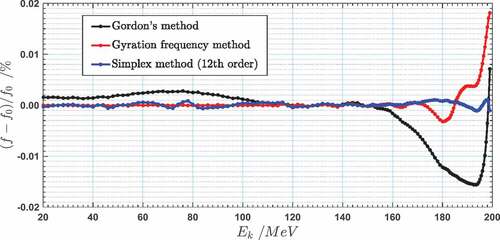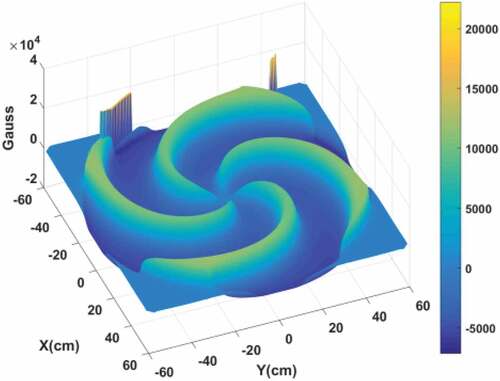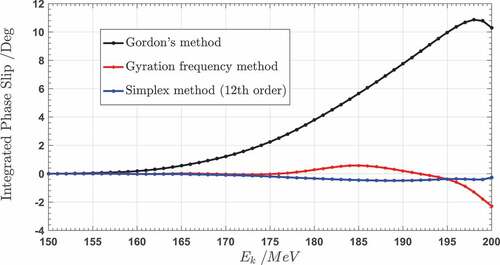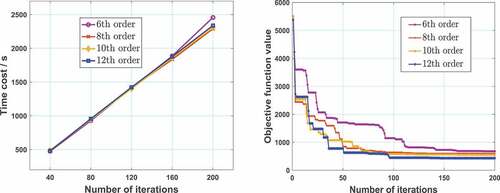Figures & data
Table 1. Main parameters of the SC200 cyclotron
Figure 4. Comparison of the isochronous field obtained from Gordon’s method, the gyration frequency-based method, and the 12th-order simplex method
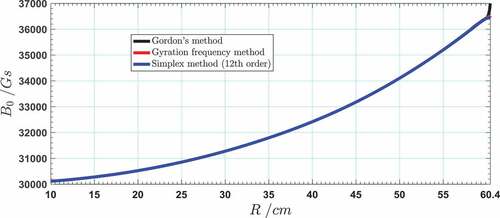
Figure 5. Difference between the isochronous field obtained from Gordon’s method, the gyration frequency-based method, and the 12th-order simplex method
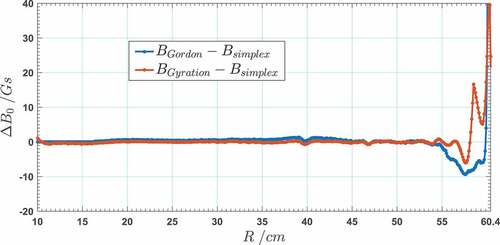
Figure 6. Relative error in the orbital frequency of Gordon’s method, the gyration frequency-based method, and the 12th-order simplex method
